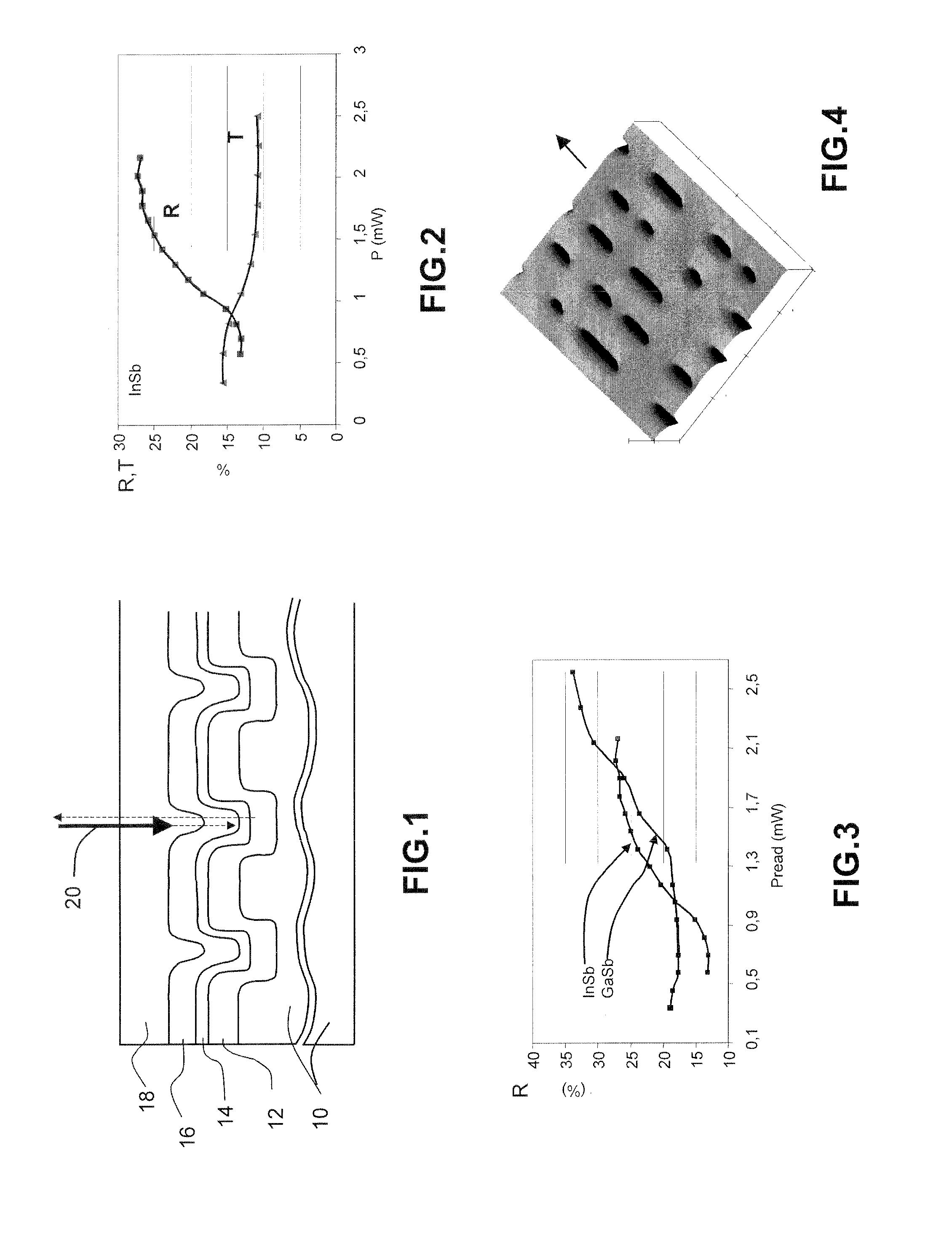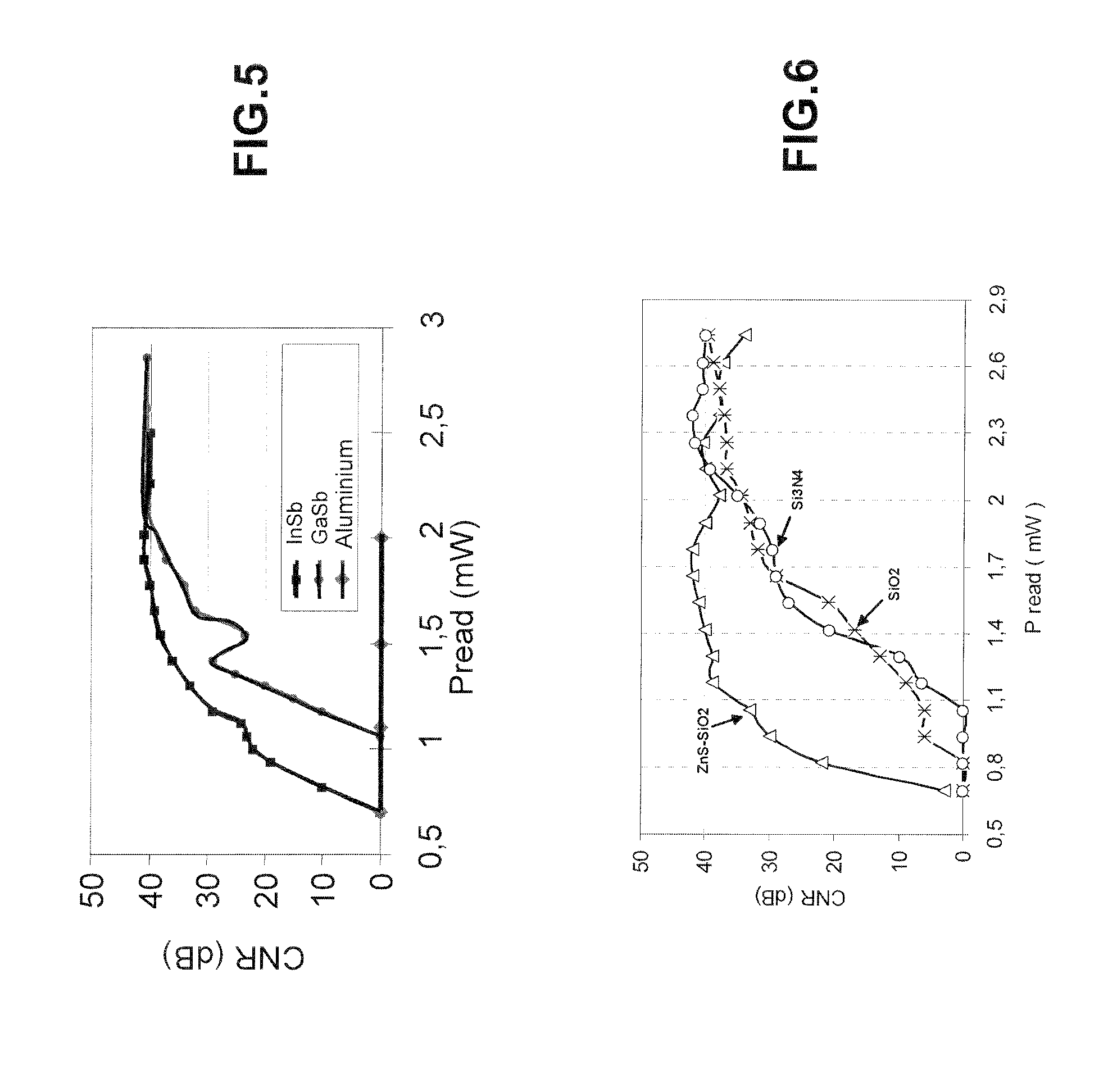High-Resolution Optical Information Storage Medium
a high-resolution, optical information technology, applied in the field of optical information recording, can solve the problems of limiting the number of read cycles and destroying recorded information, and achieve the effect of simple structure and convenient implementation
- Summary
- Abstract
- Description
- Claims
- Application Information
AI Technical Summary
Benefits of technology
Problems solved by technology
Method used
Image
Examples
Embodiment Construction
[0028]FIG. 1 shows the general structure of the optical information storage medium according to the invention. It comprises a substrate 10, which is preferably an organic material and notably polycarbonate, which is conventionally used for optical discs. The substrate will in practice be in the form of a flat disc and the information is conventionally written into the disc along approximately concentric tracks. A read laser beam, indicated by the arrow 20, placed in front of the disc, will see the information running past it as the disc rotates.
[0029]The substrate 10 includes physical marks that define the recorded information, and in this example the physical marks are made in the form of a relief impressed on the upper surface of the substrate. The relief is for example formed from pits, the width of which is roughly fixed for all the information written, but the length of which and the spacing in the run direction of the information define the content of the written information. ...
PUM
| Property | Measurement | Unit |
|---|---|---|
| thickness | aaaaa | aaaaa |
| thickness | aaaaa | aaaaa |
| thickness | aaaaa | aaaaa |
Abstract
Description
Claims
Application Information
 Login to View More
Login to View More - R&D
- Intellectual Property
- Life Sciences
- Materials
- Tech Scout
- Unparalleled Data Quality
- Higher Quality Content
- 60% Fewer Hallucinations
Browse by: Latest US Patents, China's latest patents, Technical Efficacy Thesaurus, Application Domain, Technology Topic, Popular Technical Reports.
© 2025 PatSnap. All rights reserved.Legal|Privacy policy|Modern Slavery Act Transparency Statement|Sitemap|About US| Contact US: help@patsnap.com



